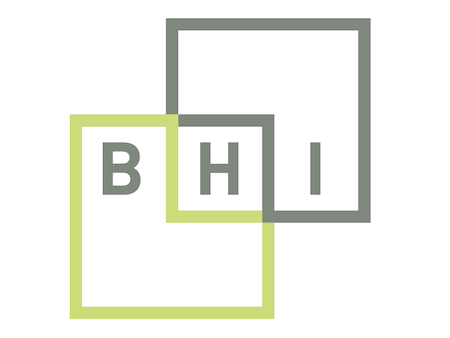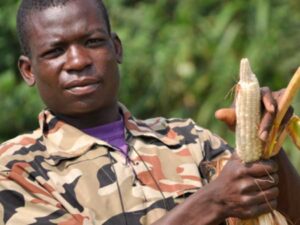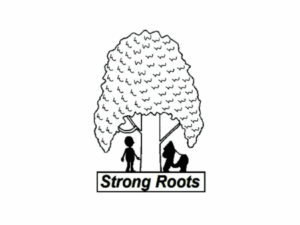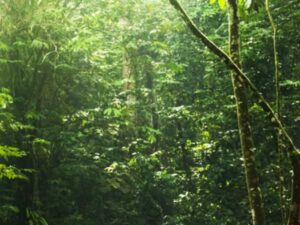Build Health International builds safe and sustainable health structures in resource-limited settings. The NGO focuses on ensuring consistent energy and oxygen are available at the patient’s bedside.
Jim Ansara of Build Health International spoke with Jessica Kantor on April 13, 2023. Click here to read the full conversation with insights highlighted.
Jessica Kantor: Could you please introduce yourself, your organization, your role in the organization, and the problem that your work addresses?
Jim Ansara: My name is Jim Ansara. I’m the co-founder and managing director of Build Health International, which is an NGO based in the United States that works on global health infrastructure, primarily in Africa and the Caribbean all in limited resource settings.
Jessica Kantor: How specifically do you address that problem?
Jim Ansara: We address a number of problems and needs. There’s been a huge void for many years around the infrastructure side of global health, which includes architecture, engineering, planning, construction, but also very much the intersection of the lack of consistent energy and oxygen, which is what’s brought me to Skoll. Skoll, along with the Gates Foundation, were primary funders to get us started about 18 months ago on fixing oxygen plants across Sub-Saharan Africa that were in disrepair, or in some cases had never been started. That’s been extremely catalytic and led to many other facets of oxygen work for us. We were one of the few NGOs that had experience in providing piping and oxygen plants in low resource settings prior to the pandemic. This is not a new problem, but the pandemic shone a spotlight on the lack of oxygen as critical frontline medication.
Jessica Kantor: How are you measuring your success right now?
Jim Ansara: That’s an interesting and challenging question because we’re two years into what really needs to be a 15 or 20 year program. The large multilateral funders are just starting to look at oxygen, the oxygen ecosphere is the term we use in low resource settings, and thinking about a longer term strategy. There’s many facets of that. With the initial grant from Skoll and Gates, we became technical consultants to the Global Fund for their C19RM program, which funded three and a half billion dollars towards oxygen related work, and specifically about a billion dollars towards new plants.
We’re a tiny part of that, but we have been working with the Global Fund and their other consultants and vendors, and with many countries, to plan what size the oxygen plants need to be, how many are needed, where they would go and what the requirements for those plants are. I was in a meeting this morning where somebody asked, what’s success going to look like in two years? Right now, prior to these plants being implemented, we don’t have exact data, but from all the plants we’ve worked with in Sub-Saharan Africa, we would say that only 20% to 30% are fully functional. Those are plants that were installed anywhere from one to 10 years ago. Success would look like changing that to 50% of the new plants up and running within a couple of years, and also training hundreds of people to maintain them because the plants are very difficult to maintain. This really is all new territory, so there’s no metrics, there’s no models. We and the funders are feeling our way through this.
Jessica Kantor: What are some of the lessons that you’re actively learning that, if you had known beforehand, it would’ve saved you a lot of time and probably tears?
Jim Ansara: I’ll start with the obstacles we’ve been facing, some of which we anticipated, some of which we underestimated. One was human resources, finding and training the right people and getting them up to speed, especially African based technicians. As part of that, as a sort of second barrier, we did not emphasize quickly enough hiring and training French-speaking technicians, trainers and engineers. We have seen much greater need in the Francophile African countries, more so than then English-speaking East Africa. That’s a lesson learned, and a place we’re actively working to catch up right now.
The third sort of barrier and lesson has been much more difficult than we anticipated, and that is to identify existing plants and get access to them. We thought that there would be lists. Through another organization, the Every Breath Counts Coalition, we made a crowdsourced list of plants. We wanted to get all the plants recorded in a database, whether they were working or not. It’s been much more challenging to get that. Private hospitals, NGOs, and the public sector ministries of health have been very cautious about sharing data on whether their plants work or not, and how much oxygen they actually produce. We literally have to send teams to these countries, seek out these plants, and then do a full assessment. That’s been perhaps one of our biggest challenges.
On a positive note, Skoll and Gates have been very flexible with us about the funding. They understood going into it that the grant objectives were going to evolve as we learned more. We’re at a stage where we’re sort of transitioning from finding and fixing existing plants to building robust training on how to maintain these plants, and thinking about spare parts and supply chain issues. Both funders cooperatively have given us a lot of flexibility in that regard, which has been very helpful.
It’s going to further morph in the future as we put in place robust training and start getting lots of people trained, and training trainers, to increase the usage of medical oxygen in hospital settings. That’s going to be done through piping oxygen as opposed to just using cylinders. We will also work with other entities on clinician training and monitoring patients. As we get more oxygen introduced into the system, that’s only part of the battle. Making sure it is better utilized is also going to be very important.
Jessica Kantor: What do you think is needed from other actors or partners in order for your model to work?
Jim Ansara: We need much more funding and much more cooperation and coordination. The global community can’t stop with C19RM. Three and a half billion dollars is significant funding, but it’s only going to take us part of the way there. We have to invest heavily in training and building capacity, especially in Sub-Saharan Africa to maintain this equipment, we have to invest in parts and supply chain. We also have to really invest in piping within hospitals, getting oxygen to each patient in each bed and training staff so that they can actually administer oxygen properly. If we could wave a magic wand, we would turn this into a pillar of global health the way HIV/AIDS antivirals have developed over the last 20 years, the way an approach to malaria has been developed and TB, we’d see a similar long-term effort for oxygen.
Jessica Kantor: Are things like the piping and the training of the healthcare workers going to be an extended part of what you’re working on, or are you just focused on the oxygen plants and getting those up and running?
Jim Ansara: We are huge advocates of piping and do a lot of it. One of the things related to piping is we are trying to revisit the standards for piping, so that it is both safe for patients and staff in hospitals, but also we can bring the per-bed cost of piping down. The piping standards were designed for the US and Northern Europe. They are not completely applicable and are too complex for the resources that are in the Global South. We’d like to rectify that, so we’re driving a number of academic studies to create a proof of concept around that. We are also working on some policy papers with PATH and other organizations in terms of the clinical training and staffing that is needed. That is something we would advocate for, but it would be done by other organizations. There’s going to have to be huge investment in that area for this to really be effective.
Jessica Kantor: Do you think, ultimately, you’ll be able to work towards systems level change?
Jim Ansara: That is the hope, but it’s going to take the global health community first to agree that oxygen is a primary frontline medicine, not just a pandemic related problem. Pneumonia is the largest killer of children under five in the Global South, and that can easily be rectified if oxygen therapy is readily available for them. It’s going to take a long-term focus and commitment by the global health community to change this. We’re hoping, again, using HIV/AIDS and the retroviral model that this can be done. It’s certainly been proven.
As an organization, we are good at getting projects done, being really resilient, and bringing a huge amount of drive and ability to overcome obstacles in our work. That’s how we’ve been successful for the last 14 years, designing and building healthcare infrastructure in low resource settings. We’re using the culture that we had already built and we’ve found that funders and other partner organizations have been very responsive to that. We’re not good at white papers, we’re not good at convening. We’re really good at going out in the field, assessing situations and getting things fixed..
Jessica Kantor: Do you have any stories that you can share that illustrate the impact that you’ve already made?
Jim Ansara: Starting in 2010 with partners in health, we designed and built the new University National Teaching Hospital in Haiti, which today is by far the largest functioning hospital in Haiti. I’d love to say it was my vision, but it was really the vision of Paul Farmer and Dr. David Walton to put piped oxygen, as well as medical gas, in at every bed, which no other hospital in Haiti had at the time. We’ve seen the impact that has had on both patient outcomes as well as shortening patient stays for 10 years.
We have to document that and really write that in a peer reviewed study, which we’re starting to do so that organizations like the WHO really accept and adopt it. We know that that is the path forward, along with providing other critical meds, robust supply chain, staffing, and training. We have a fully accredited hospital in Haiti, which is in the middle of a low grade civil war right now. To me, that’s a fantastic success. It is important to understand all the different pieces that went into making it successful and sustainable, that it was much more than just infrastructure. Seeing it is possible gives me a lot of hope that we can replicate that over and over again, we can build systems to do this.
Jessica Kantor: How do you see your work evolving over the next five years?
Jim Ansara: We are quickly pivoting to a focus on both training and supporting the hundreds of plants that the Global Fund is funding under C19RM. We are focusing on making sure that as many of those plants as possible are fully functional and sustainable. By sustainable, I mean that they have adequate electricity, which is a huge issue, and that they have the proper environment in terms of temperature, dust and things like that. We need to ensure that the environment is correct so that the machines are not going to break down and that we have trained biomed technicians to maintain those plants and a supply chain of parts. Then, the next frontier for us is to push an agenda, hopefully with many other partners, about piped oxygen within those hospitals where we now have an oxygen supply and can bring piped oxygen to every bed. If we did that, and made real headway in the next five years, I would be very happy.
Jessica Kantor: For the purposes of this conversation, where people can learn from the model that you’re putting together, and the models that you’ve already created, what do you think is important to add to this conversation that we didn’t necessarily talk about?
Jim Ansara: I think the critical thing is that funders and implementers, and any organizations that are in this space or in the global health space, need to have a long-term horizon and vision and not just do one year, two year, three year grants that address one piece of the problem. They must look at it holistically and bring organizations together that can help solve this problem over time. If this were easy, we wouldn’t be in this situation. We wouldn’t have been as exposed during COVID as we were, and there’ll be other pandemics. And even if there weren’t, this is still a fundamental global health issue that has to be addressed.Jessica Kantor Yeah.
Jessica Kantor: Wonderful, thank you so much for sharing your insights.
Click here to read the full conversation with insights highlighted.
Jessica Kantor is an independent journalist specializing in health, human rights, and social impact. Her work can be found in Fast Company, Healthcare Quarterly, The Las Vegas Review-Journal, and others. She is a living kidney donor.
* This interview has been edited and condensed.
Read other insights from social innovations in healthcare.







